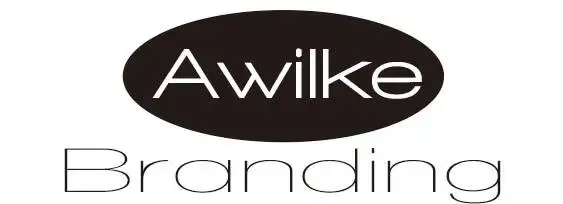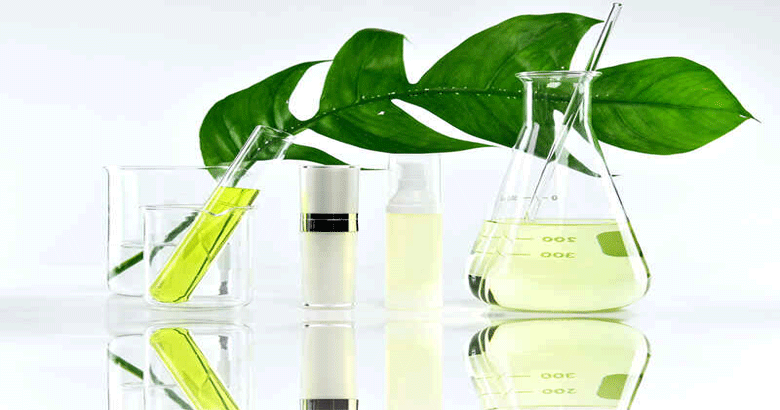
As the demand for personalized hair care solutions skyrockets, the private label hair wax market is brimming with opportunities. Hair wax products, celebrated for their versatility and effectiveness, have become staples in grooming routines worldwide.
Whether you are an entrepreneur looking to dive into the beauty industry or an organization aiming to expand your product line, understanding hair wax formulations and ingredients is crucial for creating standout products.
In this comprehensive guide, we will examine hair wax formulations. You’ll discover the essential components that define high-quality hair wax, from natural waxes and oils to innovative synthetic compounds. By mastering these formulations, you can tailor your products to meet diverse customer needs, ensuring superior performance and satisfaction.
What is Hair Wax?
Have you ever wondered why some hairstyles seem to defy the odds, holding their shape and texture all day long? The answer might just lie in a tiny tub of hair wax. This versatile styling product isn’t just for creating edgy spikes or sleek, shiny pompadours—it’s for anyone aiming to tame their mane with precision and flair. But what exactly is hair wax, and why should it be a staple in your grooming arsenal?
Hair wax is a styling product known for its tacky, dense consistency, which can range from soft pastes to hard waxes. Its primary function is to sculpt, texturize, and hold hair in place without hardening it to a crisp, unlike gels or sprays. Ideal for everyday use, hair wax allows for flexible styling—whether you’re looking to enhance curls, tame flyaways, or add volume to limp strands.
Benefits of using hair wax over other styling products
When compared to its shelf mates like gels and pomades, hair wax stands out for several reasons. First, it’s generally alcohol-free, which means it won’t dry out your hair or scalp. This is crucial for maintaining healthy, hydrated locks. Hair wax also provides a matte finish, which can be more natural-looking than the glossy sheen of gels, making it a go-to for subtle daytime and dramatic evening looks.
Moreover, the versatility of hair wax is unmatched. It can be used on different hair lengths and types, from short to long and fine to thick. It’s equally effective on straight hair as on curly, offering a pliable hold that can be reshaped throughout the day without additional application.
Beyond just keeping your hair in place, hair wax nourishes and protects. Many formulas include natural ingredients like beeswax and essential oils, which condition the hair while styling. This dual-purpose action not only improves the immediate appearance of your hair but also donates to its long-term health.
Why Choose Hair Wax for Your Private Label Brand?

Have you considered the dynamism of the hair wax market in your private label strategy? With the global hair wax market projected to thrive, expanding at a compound annual growth rate (CAGR) of approximately 5.5% from 2022 to 2030, the time is ripe to capitalize on this trend. The growing consumer preference for natural and soft hair styling boosts the demand for hair wax products, particularly among the younger demographic who favor these products for their ease of use and natural finish.
The hair wax market’s appeal is broad and versatile, catering to various hair types and styling needs. From providing a matte finish to enhancing hair texture without the greasiness of traditional gels, hair wax offers a desirable alternative for consumers looking for flexible and re-workable styling options. This positions hair wax as a premium offering in the grooming and personal care market, were consumers increasingly lean towards high-quality, versatile products.
So, why hair wax? By integrating hair wax into your private label brand, you position yourself at the forefront of a market driven by invention and consumer preferences, aligning with trends that favor sustainability and ingredient transparency. This strategic positioning enhances brand visibility and caters to the growing part of consumers looking for styling products that do not compromise quality or ethical standards.
Key Ingredients in Hair Wax

Natural vs. Synthetic Ingredients
When considering hair wax for your grooming or cosmetic line, the choice between natural and synthetic ingredients is pivotal. Natural ingredients, like beeswax and essential oils, often provide added benefits such as moisture retention and a pleasant fragrance without the harshness that synthetic components might introduce.
Beeswax, for instance, is celebrated for its moisturizing and protective qualities, which shield the hair from environmental damage and help maintain healthy, styled locks.
On the other hand, synthetic ingredients are typically relied upon for their consistency in performance and longer shelf life. Ingredients such as petrolatum, often found in conventional hair waxes, are prized for their unparalleled hold and ease of formulation.
However, the shift towards natural ingredients is driven by growing consumer awareness and preference for products that are not only effective but also gentle and environmentally friendly.
Common Ingredients in Hair Wax
- Beeswax: A staple in hair wax formulations, beeswax offers a strong hold without the greasiness of synthetic alternatives. Its natural barrier properties also help to protect and moisturize the hair.
- Lanolin: Sourced from sheep’s wool, lanolin is an excellent emollient known for providing a pliable hold and enriching the hair’s texture, making it ideal for styling products.
- Petrolatum: Known for its effectiveness in sealing moisture and providing a sleek finish, petrolatum is a common base in many hair wax products due to its reliable hold.
- Essential Oils and Fragrances: Natural fragrances such as lavender, peppermint, and tea tree oil enhance the hair wax with their pleasant scents, antibacterial properties, and soothing effects, making it more appealing and functional.
Specialty Ingredients
- Kaolin Clay: This gentle clay adds volume and texture to hair, making it a popular choice for products to boost hair’s body and manageability.
- Candelilla Wax: As a vegan alternative to beeswax, candelilla wax is prized for its ability to enhance texture and suit those looking for plant-based product formulations.
- Carnauba Wax: Known for its high melting point, carnauba wax is excellent for maintaining hold in high temperatures, making it ideal for summer hair products.
- Emollients and Conditioners: Ingredients such as coconut oil and shea butter are popular choices for their conditioning benefits, as they help soften hair, add shine, and enhance the overall health and appearance of the hair.
Formulation Techniques for Hair Wax

Ø Balancing Hold and Flexibility:
Achieving the perfect balance between hold and flexibility in hair wax formulations is crucial for creating products that maintain style and allow for natural hair movement.
The key lies in selecting the right combination of ingredients. Waxes like beeswax or carnauba provide the necessary hold. At the same time, ingredients like oils or silicone derivatives (like dimethicone) can offer flexibility, preventing the hair from becoming too stiff.
A common approach is to use a base of hard waxes to establish a hold, then modify the rigidity with softer oils or waxes that decrease the formula’s firmness, thereby increasing pliability.
This method allows the hair to maintain its shape without sacrificing its natural texture or movement. Adjusting the ratios of these components can fine-tune the level of hold and flexibility to suit different hair types and styling needs.
Ø Creating Different Textures:
Hair wax’s texture greatly influences the hairstyle’s final look, from matte to shiny finishes. Kaolin or clay can be integrated into the formulation for a matte appearance. These ingredients absorb excess oil, reducing shine and giving the hair a natural, textured look.
To achieve shinier finishes, use ingredients like petroleum-based waxes or certain oils to enhance the hair’s luster without making it look greasy.
Formulating different consistencies, such as paste, cream, or solid, depends largely on the choice of waxes and the balance of liquids in the formulation. Pastes and creams often combine waxes with higher oils or emollients to achieve a softer, more spreadable texture.
Solids typically rely on a higher concentration of waxes with minimal liquid additives to maintain their form and provide a stronger hold.
Ø Practical Application Tips:
When applying hair wax, it’s crucial to start with a small amount and spread it evenly throughout the hair, particularly focusing on the areas where hold and texture are most needed.
Warming the wax between the hands before application can make it easier to work through the hair for those with longer or thicker hair. This method evenly distributes the product, prevents clumping, allows for better styling control, and keeps the hair light and free.
Quality Assurance and Testing in Cosmetic Manufacturing

1. Ensuring Product Safety and Efficacy:
Testing for Allergens and Irritants: The safety of cosmetic products is paramount, with allergen and irritant testing being a crucial part of product development. These tests help identify potential reactions consumers might have to the ingredients. Patch testing, for example, is commonly used to diagnose dermatitis and other skin reactions, ensuring products are safe for use before hitting the market.
Stability Testing for Shelf Life: Stability testing is another vital aspect of quality assurance that determines how long a product can maintain its intended quality under various environmental conditions. This includes testing how products react to heat, humidity, and light over time, helpin to predict their shelf life, and ensuring they remain effective and safe from production to usage.
2. Regulatory Compliance:
Steering the complexities of global regulations is critical for cosmetic companies. In the European Union, cosmetics must comply with Regulation (EC) No 1223/2009, which mandates a comprehensive safety assessment and strict labeling requirements to ensure consumer safety.
Similarly, regulatory frameworks across different regions require adherence to specific standards that govern everything from ingredient usage to marketing practices.
3. Sustainability and Ethical Practices:
The cosmetic industry is increasingly focusing on sustainable sourcing and ethical manufacturing practices. This involves selecting ingredients that are effective and harvested in a way that respects the environment and social ethics. Companies are also improving manufacturing processes to minimize environmental impact, reflecting a commitment to responsible production practices.
Ensuring the integration of these practices is not just about adhering to regulatory norms but also about aligning with consumer expectations and contributing to the industry’s sustainability.
As consumers become more aware and concerned about their consumption choices’ environmental and ethical importance, companies that proactively adopt these practices will likely positively impact their brand image and consumer loyalty.
The ongoing commitment to these areas is about more than compliance. Still, it is also a core part of building trust and credibility with consumers, ensuring they feel confident in the safety, efficacy, and ethical standards of the products they choose to use.
Partnering with Us for Your Private Label Hair Wax
Imagine you’re at the brink of realizing your dream—launching your very own line of hair wax products—but you’re grappling with the complexities of formulations, sourcing ingredients, regulatory hurdles, and market positioning. Where do you turn? Awilke Branding is your expert partner in private label hair wax manufacturing.
We blend expertise with experience to transform your vision into a tangible, market-ready product. Our extensive history in the beauty and personal care industry equips us with the deep knowledge necessary to navigate the details of product development from inception through to launch. By partnering with us, you gain access to top-tier formulations tailored to meet both market demands and regulatory standards.
So, Awilke Branding is not just about creating a product—it’s about crafting a brand that resonates with your vision and values. Contact us today to explore the potential of your private label journey and see why partnering with Awilke Branding is your pathway to success in the bustling beauty industry.

 How to Build an Effective Hair Wax Line for Your Brand
How to Build an Effective Hair Wax Line for Your Brand


